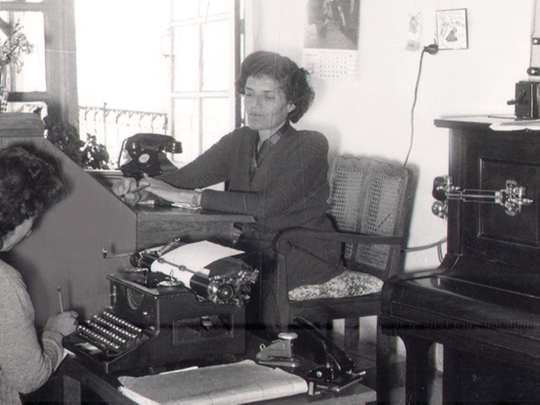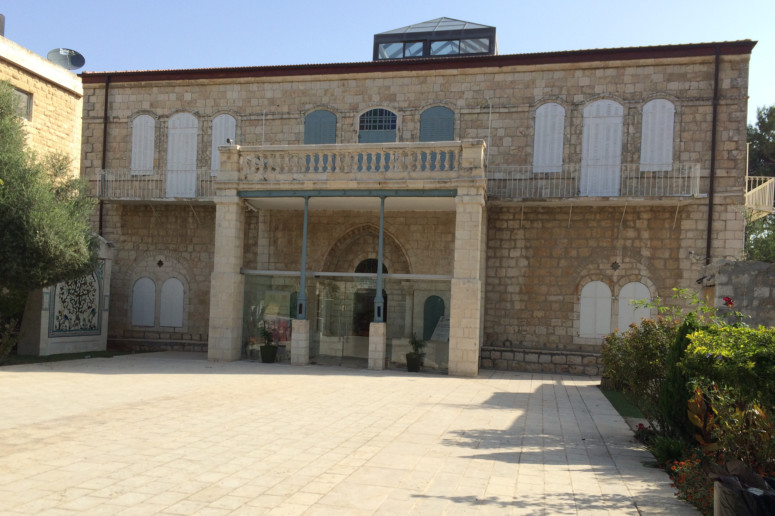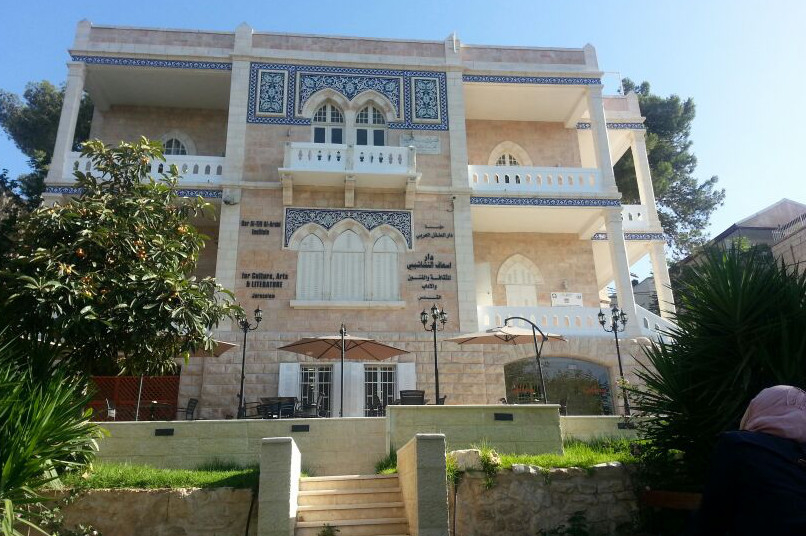
Many might recall the movie “Miral”, featuring Frieda Pinto playing the role of a student who falls in love with a Palestinian activist. The film was based on the true story of a Palestinian woman, Hind Husseini, who transformed her family’s home into an orphanage and school for Palestinian children in 1948, naming it The Dar Al Tifel Al Arabi Organisation.
Adjacent to the Dar Al Tifel School stands the Palestinian Heritage Museum, a three-storey, 19th century building that houses permanent galleries and exhibition halls, in addition to a large multi-purpose hall on each level, a textile restoration room/library, an arts workshop and the open yard at the entrance that leads to a coffee shop and gift shop.
One cannot help but marvel at the passage of time and the manner in which an exceptional Palestinian woman’s dream has been transformed into a living monument of the human spirit of compassion and resistance.
Museum director Khaled Khatib, an engineer who is passionately committed to the cause of Occupied Jerusalem, welcomes me to his functional office. “Dar Al Tifel was a consequence of the Palestinian tragedy 68 years ago, especially the Deir Yassin Massacre, but we have to move on, to develop and to continue attaining our goals. Instead of stereotyping our case, we try to portray a developed image of Palestinians through their work and achievements. Today Dar Al Tifel comprises three parts — the school, museum and a cultural centre — which we use to promote the Palestinian identity as a means to achieve our freedom and independence,” he says.
“Husseini started the humanitarian organisation at a time when Palestine had lost its land and Israel was created on its ruins. The organisation took in 55 orphans, and then it grew into a boarding school for orphans and needy girls from all over Palestine. In the early 1950s, about 500 girls lived at Dar Al Tifel, and one woman was capable of doing this in difficult and trying times.
“With the support of well-to-do families and relatives in [Occupied] Jerusalem, Husseini was able to obtain additional land and money from a Kuwaiti family and other sources to have additional floors at Dar Al Tifel and transform it into an elementary school. The people of [Occupied] Jerusalem as well as the Arab world started feeling the presence of Husseini. She gained the reputation of an achiever. In 1970-71, Husseini got funds from a German organisation to build a five-storey building as a boarding school that housed 350 orphans from all over Palestine,” he says.
Khatib knew Husseini personally. He was 10 when he first met her. “My father was the school’s doctor after 1967. “She made a special connection. To her it was all about a national identity and not just a school. She had a family but she was also a very powerful woman who got what she wanted. And in 1982, I worked as the engineer on the building of the college.”
Known for taking up the cause of Palestinian women and caring for orphans, Husseini continued to educate the children, eventually establishing a college for them as part of Al Quds University. The building still bears her name — Hind Al Husseini College for Girls.
“After establishing the kindergarten, school and college, Husseini began to explore cultural venues in the early 1960s with the idea of a museum. She managed to open the first heritage museum in 1978, which was modest and in 1982 she bought the property of Mohammad Issaf Nashashibi, a popular poet, for a centre for culture, arts and literature. She did all this while she herself lived in a modest room, dedicated solely to serving the Palestinian people. An archaeological school, an Islamic research centre and a library were established in the building, with residents donating more than 20,000 books and rare manuscripts. But this venture never really took off,” Khatib says.
Husseini died in 1994, but she made sure that the six buildings she established were registered as the property of the Islamic Waqf, so nobody could ever sell them. Her frugal lifestyle is evident in her room and furniture, which is housed in the Palestinian Heritage Museum.
“We obtained funds to rehabilitate this place and Dar Issaf Nashashibi for culture, arts and literature 10 years ago but we couldn’t complete it as we lacked expertise. However, with assistance from the Italian government and technical advisers involved on a part-time basis, we put in the final touches to both places,” Khatib says.
The Palestinian Heritage Museum opened in May 2012 and Dar Issaf Nashashibi some months later.
“And we never looked back. We now have the first public library in [Occupied] east Jerusalem, with activities being organised throughout the year. The museum is also very active and our aim is to expand with infrastructure and upgrades, thanks to a $2 million [Dh7.35 million] grant provided by the Islamic Development Bank,” he says.
Dar Issaf Nashashibi has since hosted tens of art exhibitions, workshops, documentary film screenings, plays, public seminars, arts and poetry events, book launches and other cultural activities. The library has also expanded with the acquisition of 8,000 books through a Jordanian civil society donation.
Today 1,000 students are enrolled at Dar Al Tifel but the “Israeli Separation Wall” has denied both West Bank Palestinians and Gazans from enrolling at the school. The boarding school now has only 15 live-in orphans, but the unused building now houses 200 kindergarten children.
The organisation has been managed by an all-female board of trustees ever since its establishment and the current president of the board is Mahira Dajani, who took charge after Husseini passed away.
“We plan to erect a commercial building, which may take five to seven years, but it will help to sustain the organisation with a steady income,” Khatib says.
Husseini’s dream lives on — from humble beginnings as a humanitarian organisation, providing shelter and education to orphaned girls amid the Palestinian tragedy, it has grown and developed into a landmark that now provides inspiration to Palestinians living in the occupied city. It stands as a symbol in the effort to stem the tide of “Judaisation”, and yet it remains the story of a Palestinian woman and her achievements against immeasurable odds.
Rafique Gangat, author of “Ye Shall Bowl on Grass”, is based in Occupied Jerusalem.














